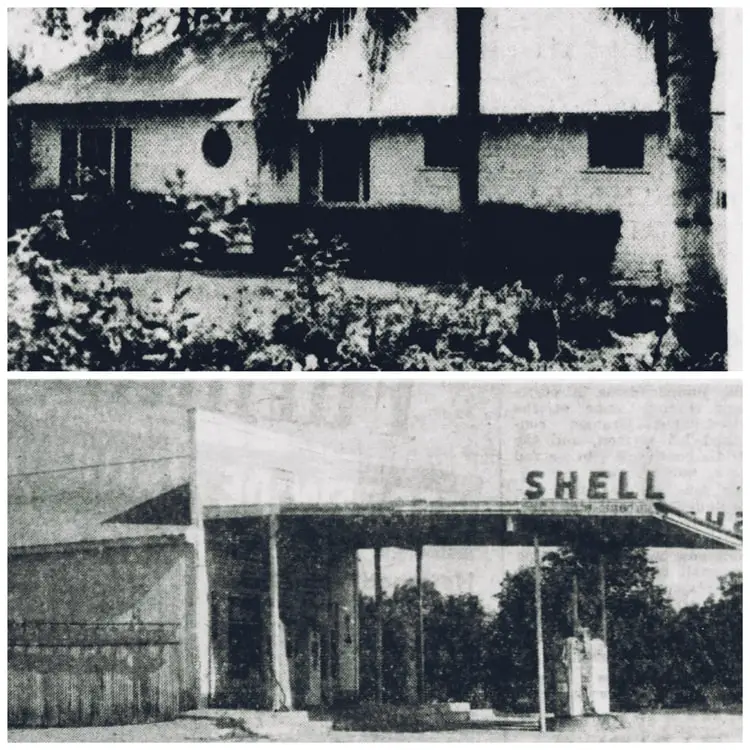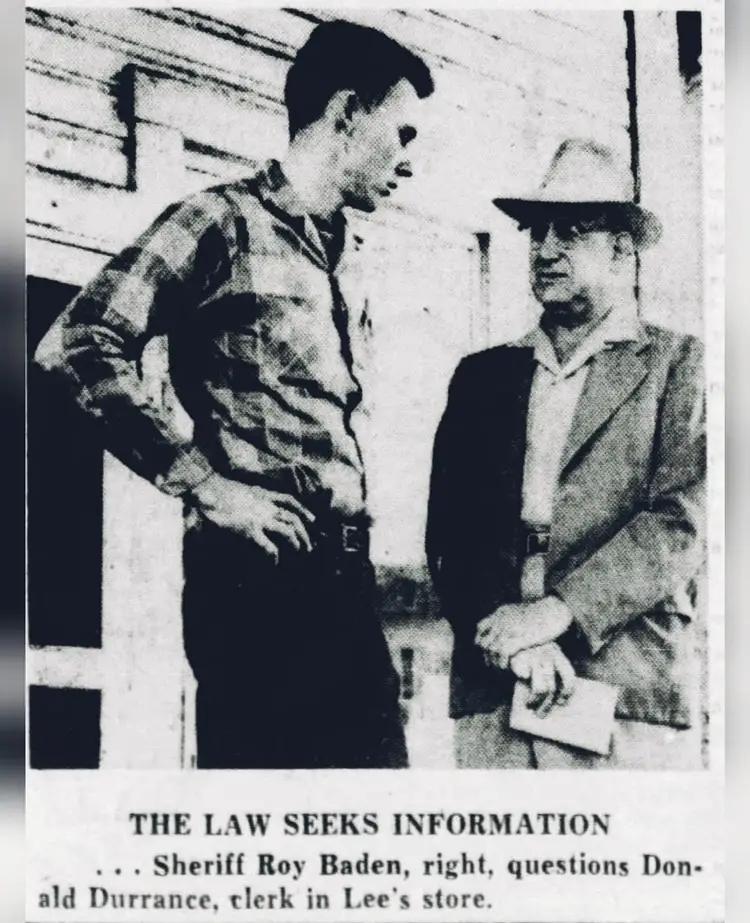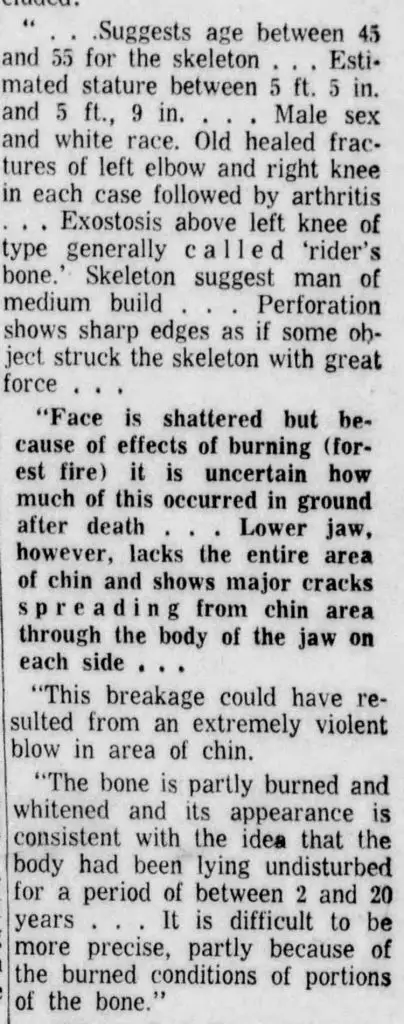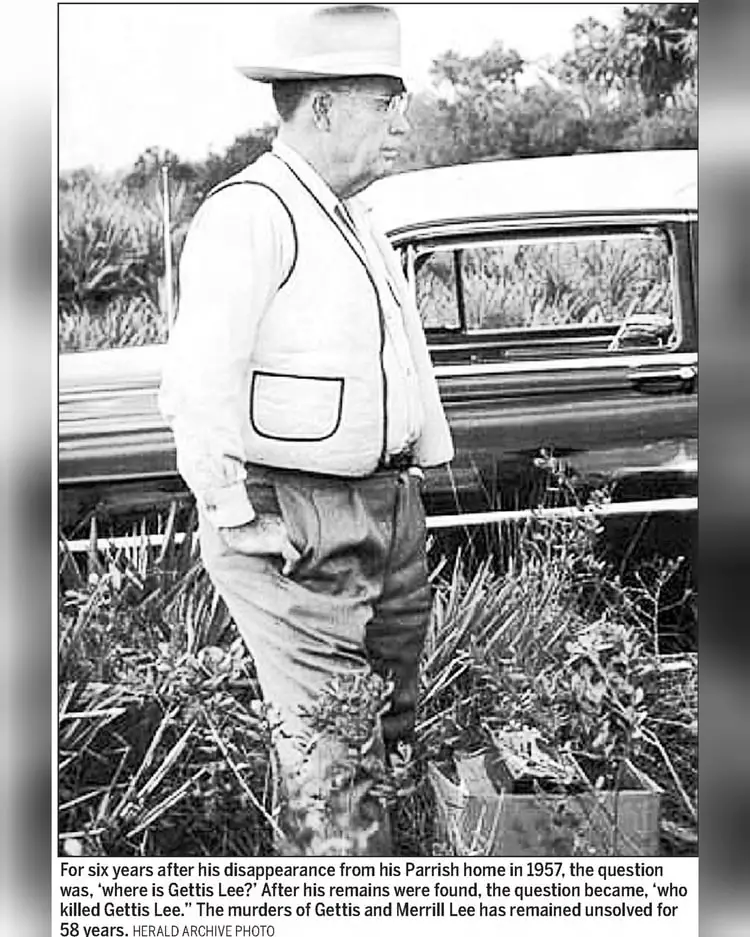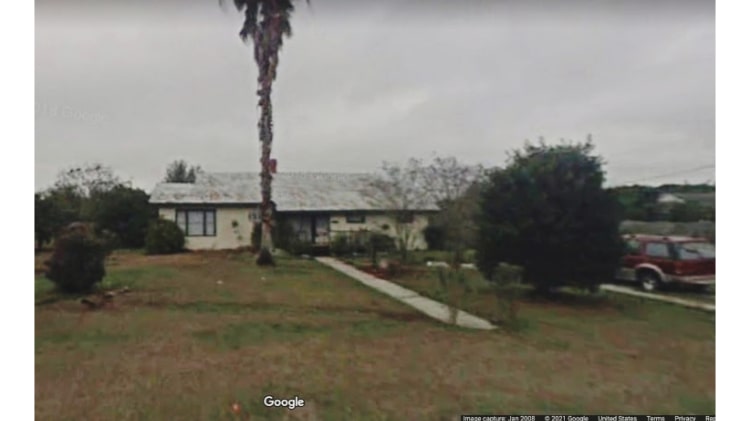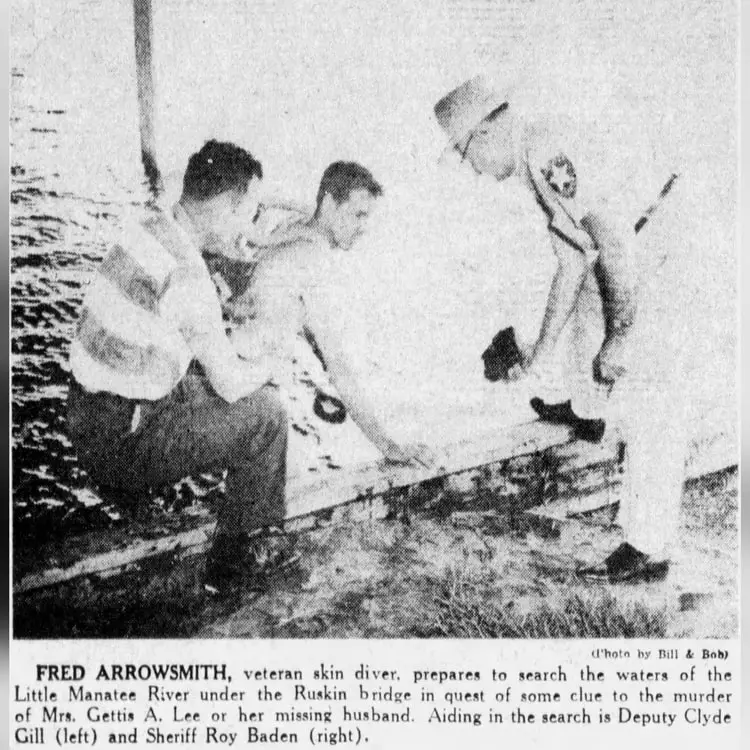Gettis Lee had numerous affairs and was possibly involved in criminal activity.
BRADENTON, Fla. — Gettis and Merrill Lee were well-known in the Parrish community as they had lived there for decades on 121st Avenue East in a home built by Gettis Lee in the 1930s. Lee, 63, owned a general store and was considered the unofficial “mayor’ of Parrish who helped the less fortunate. The couple was childless as Merrill Lee could not bear children.
Lee’s success did not skyrocket until after World War II. Before the war, he had his store and a small citrus grove adjacent to his home, which earned him a modest living. By 1957, his empire had grown to include a farm with 100 head of cattle and four large citrus groves.
Lee regularly carried large sums of money and always bragged about his wealth. He had numerous affairs and showered his mistresses with gifts.
One of his oldest friends told The Tampa Bay Times in May 1963: “Old Gettis was as tight as the bark on an oak tree after a good rain, but he would throw away his money on women.”
For six years, Lee had a lover in Bradenton who was young enough to be his daughter. When she did not get hired at a Palmetto bank, he withdrew all of his money there, bought her a car, and started making payments on her $4,000 house mortgage.
One of his mistresses told The Times that he was “polite, generous but jealous.” Another said, “He was a man who wanted his cake and eat it, too.”
After thieves stole his store’s safe, Lee always carried his .32-caliber pistol with him. Despite his drawbacks and endeavors, Lee never mistreated his wife.
Merrill Lee, 60, was the complete opposite of her husband and a bit of a recluse, leaving home occasionally to visit neighbors.
Judd Arnett, then a reporter for the Tampa Bay Times, wrote in July 1957 that Merrill Lee was “a harmless, retiring, wouldn’t-hurt-a-fly, take-a-cake-to-the-neighbors sort of woman.”
On Thursday, March 7, 1957, Parrish had one of the worst storms the area had seen in years. Yet, it was a typical day for Lee. He opened his store at 6 a.m., worked until closing, and then drove one of his employees, Donald A. Durrance, 26, home after work.
The following morning, Durrance arrived at the store to start his shift, only to discover the store locked and Lee nowhere around — the first time in 30 years that Lee had not opened the store.
Durrance drove to the Lee home and noticed three lights on, the back door open, but no sign of Lee or his wife. Durrance notified the Manatee County Sheriff’s Office.
When deputies arrived at the Lee home, they found Merrill Lee’s purse on the bed, the bedlinens turned down, and Lee’s bed undisturbed. There were no signs of violence in the house.
Outside, they found orange peelings and footprints around an orange tree but quickly discounted the theory that the person(s) responsible watched the home beforehand. Smiley said workers had pruned the trees recently, and the pruners could have eaten oranges and made the footprints.
An extensive search for the couple began. State Attorney William McKinley “Mack” Smiley led the investigation.
Durrance told Smiley that Lee took him home after closing the store. He saw Lee put $2000 to $3000 in cash and checks in the car’s glove compartment.
Investigators were able to trace Lee’s step up to a certain point. After taking Durrance home, he bought three chicken dinners and drove to his lover’s house in Bradenton. But what he did after that is a mystery.
No one saw Merrill Lee alone or with her husband on March 7. Sidney and Vivian Buice lived across the street from the Lees and said they had seen her the night before when she visited them.
“She said she had been combing her hair when she saw someone outside her window watching her,” said Vivian Buice in 2015.
Other witnesses had seen a car in front of Lee’s darkened store on the night of March 7. They did not pay any attention at the time because they had seen vehicles at the store after hours many times before.
On Friday, March 8, 1957, police found Lee’s abandoned car Groover’s Grocery in Palmetto, 12 miles southwest of Parrish, on U.S. 41. The vehicle was locked with Lee’s hat inside. A bullet had ripped through the hat. A March 1957 Tampa Bay Times piece stated, “The hat had no bloodstains, no gunpowder burns, but lead particles were detected.”
A man who worked at a nearby service station told police the vehicle was parked there sometime the previous night.
The following day, Tampa road worker Stanley Wegscheid, 25, was driving home on Erie Road when he spotted what appeared to be blood on the road’s shoulder and pulled over. He got out of the car to investigate and found Merrill Lee’s beaten and slashed body, lying face down and curled in a fetal position in a canal along a deserted part of Erie Road. Merrill Lee was fully dressed in a blouse, skirt, and low-heeled canvas shoes. A 1963 article stated she was wearing red soft-soled slippers.
Merrill Lee’s autopsy showed she was shot four times — in the head, neck, side, and lower leg around the knee. Authorities theorized her captors shot her in the leg as she tried to escape and then shot her three more times. Her death occurred between 9 and 11:30 p.m. on March 7, 1957.
Police failed to locate Lee during the massive search. But they did find a deserted shack near Ellenton containing bloodstains, a bloody T-shirt, and scattered bolita tickets. They also found a sunken rowboat said to be Lee’s and an abandoned car. Police unsuccessfully traced the vehicle. Authorities later said the bloodstains were from an animal but provided no other information on the rest.
Investigators questioned numerous people throughout the investigation, but with leads running dry, the case went cold.
There were a few theories in the Lee case.
Some people claimed Gettis Lee ran afoul of Tampa bolita-gambling interests and that a professional assassin did him in. Run by crime syndicates, the lottery-like game had spread from Cuba to Ybor City in the 1880s. Gamblers could buy tickets from grocery stores, newspaper delivery men and even some taxi drivers.
Longtime resident Lamar Parrish, who did business with Lee, said he never saw Lee sell bolita tickets. But other residents remember Lee selling tickets, which meant he would have had to give a cut to the game organizers.
ParrishFlorida.com
Another theory stated that Lee was rumored to be connected to a large-scale moonshine operation and moonshiners might have killed him. The Herald-Tribune reported in 2007 that “rural Manatee was an ideal hiding place for several illegal stills. Lee’s store’s large amounts of sugar and corn would have made him an attractive ally for moonshiners.”
Still, others thought Lee killed his wife and fled to Brazil, Mexico, or some other exotic location, but Lee’s mother, Elizabeth “Lizzie” Lee, believed he had been killed, too. She insisted that “someone killed my boy,” and offered reward money. She died in 1962 without ever knowing what happened to her son.
Some believed the double murder was a crime of passion, committed by either a jealous mistress or the spouse.
Democratic Gov. Leroy Collins removed Baden as sheriff in 1959 for illegal activities; Collins then appointed Herman E. Turner as interim sheriff. In November 1960, Ken Gross was elected as the new Manatee County sheriff. He reopened the Lee investigation in early 1963.
On Saturday, May 11, 1963, two men walking home from a fishing trip spotted a 6-foot rattlesnake and shot it. While pursuing the wounded snake, they stumbled upon skeletal remains in a palmetto thicket 1.5 miles east of Parrish, a few yards off State Road 62 west of Spencer Parrish Road.
The skull was found in a separate area a few feet from the other bones. Animals had scattered the remains over a 20-foot area. Investigators found Lee’s wallet, gold Lord Elgin watch, size 7 1/2 shoes, and dentures, later identified by Lee’s dentist as belonging to the missing store owner.
Dr. J. Lawrence Angel of the Smithsonian Institution examined the skeletal remains.
Police investigated all possible theories and followed up on dozens of leads. They questioned suspects throughout the state and gave a few polygraph tests, the Herald-Tribune reported. However, authorities never arrested anyone in the double murder, and it remains unsolved.
Authorities believe the Lees knew their killers, but the people involved are probably deceased. A fire destroyed the Lee residence in May 2008.
True Crime Diva’s Thoughts
I lean toward the double murder having something to do with bolita or moonshine. The only problem with either theory is that the double murder likely had to do with money, which Lee had plenty of, so he could have paid any debt he might have owed. Maybe he doublecrossed those involved in other ways.
Lee’s mistresses seemed pretty content with their arrangements with him and said that he was the jealous one. I don’t think a spouse killed them because there would be no reason to torture and kill Merrill Lee.
We know he visited his Bradenton mistress on the night he vanished and he bought three chicken dinners. Who was the 3rd dinner for?
And then we have the items found in the shack as well as the rowboat and car. One article said that authorities did not really pay much attention to the bloody T-shirt or bolita tickets found there. That is strange, especially since Lee was rumored to sell bolita tickets. Did they check any of these items for fingerprints?
I thought it was interesting that Lee’s glasses were not at the house or with the remains but his dentures were. Angel said he likely got hit extremely hard in the jaw, so the impact would have knocked the dentures out of his mouth. His eyeglasses likely fell off from the beating, too. So, why weren’t the glasses with the remains?
Why didn’t the perpetrators kill the Lees in their home? Why did they dispose of the bodies in separate locations?
I also believe Merrill Lee saw one of the killers the night before, standing outside watching her as she combed her hair. I have no idea why the man did this or why he didn’t care if she saw him. She obviously did not recognize him, or she would have told Buice.
I briefly thought Lee might have killed his wife, faked his own death, and then fled the area. Officials could not identify skeleta remains like we do today, so those remains could have been anyone. They identified him through his dentures, not his original teeth. His eyeglasses and pistol were never. He always wore his glasses and regularly carried his pistol. Those items should have been with the remains. And what about the items found at the shack?
Something worth noting that may or may not be related to the Lee case is the disappearance of one of the divers involved in the search for Lee.
Fred Arrowsmith and Gene Cloud spent two hours searching waters along U.S. 41 and 301 in March 1957. They never found any clues relating to the Lee case.
His grandmother told the Tampa Bay Times in October 1957: “He was sick the day after diving for the sheriff and told me he didn’t want to dive anymore. I asked him why and he said he might see something he would never forget if he continued.”
Arrowsmith sold his diving equipment for $100 and accepted a Miami paint and body shop job. He sent part of his paycheck to his wife and three children, who lived with his grandmother.
His grandmother last saw him on May 9. He left her home to drive to Miami to begin his new endeavor and planned to return the following weekend. She never saw her grandson again and thought it unusual that he quickly gave up diving.
On May 19, 1957, he collected his paycheck, put his car and tools in the shop, and vanished.
Arrowsmith was involved in a domestic dispute with his wife before he disappeared. However, his grandmother did not believe he would have left his family. Police were unable to connect his disappearance to Gettis Lee’s. I could find only one newspaper account of Arrowsmith’s disappearance, so it is unclear if he was ever found dead or alive.




